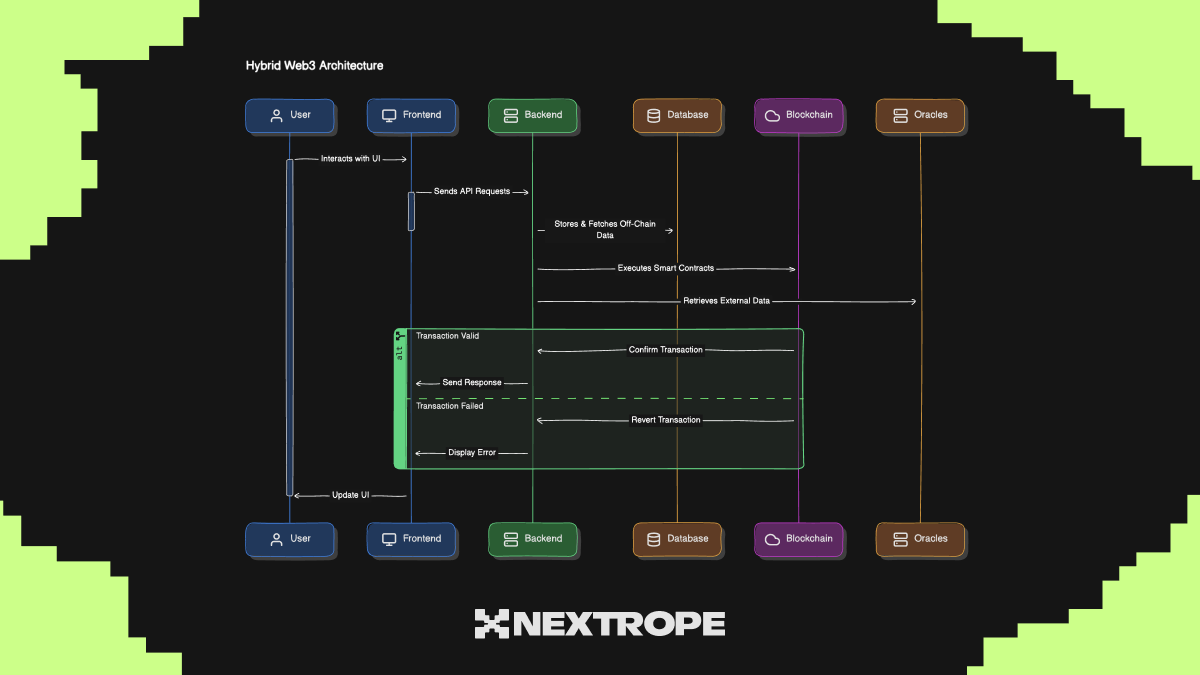Having the right hardware is crucial for research, development, and implementation. Graphics Processing Units (GPUs) have become the backbone of AI computing, offering parallel processing capabilities that significantly accelerate the training and inference of deep neural networks. This article analyzes the five best GPUs for AI and deep learning in 2024, examining their architectures, performance metrics, and suitability for various AI workloads.
The NVIDIA RTX 3090 Ti represents the pinnacle of NVIDIA’s consumer-oriented Ampere architecture lineup, making it a powerful option for AI and deep learning tasks despite being primarily marketed for gaming and content creation. Released in March 2022 as an upgraded version of the RTX 3090, this GPU delivers exceptional performance for profound learning practitioners who need significant computational power without moving to enterprise-grade hardware.
Architectural Prowess
The RTX 3090 Ti features 10,752 CUDA cores and 336 third-generation Tensor Cores, which provide dedicated acceleration for AI matrix operations. Operating at a boost clock of 1.86 GHz, significantly higher than many enterprise GPUs, the RTX 3090 Ti achieves impressive performance metrics for deep learning workloads. Its Tensor Cores enable mixed-precision training, allowing researchers to optimize for both speed and accuracy when training neural networks.
Memory Configuration
One of the RTX 3090 Ti’s most compelling features for deep learning is its generous 24GB of GDDR6X memory, which provides a theoretical bandwidth of 1,008 GB/s. This substantial memory allocation allows researchers and developers to work with reasonably large neural network models and batch sizes without immediate memory constraints. While not as expansive as some enterprise options, this memory capacity is sufficient for many typical deep learning applications and research projects.
The RTX 3090 Ti delivers approximately 40 TFLOPs of FP32 performance and around 80 TFLOPs of FP16 performance through its Tensor Cores. This makes it exceptionally powerful for consumer hardware, surpassing many previous-generation enterprise GPUs. However, its double-precision (FP64) performance is limited to about 1.3 TFLOPs, making it less suitable for scientific computing workloads that require high numerical precision.
With a TDP of 450W, the RTX 3090 Ti consumes significant power and generates considerable heat during intensive workloads. This necessitates robust cooling solutions and adequate power supply capacity, especially during extended training sessions. Despite these demands, it offers remarkable performance-per-dollar for individual researchers and smaller organizations that cannot justify the cost of data center GPUs.
You can rent NVIDIA RTX 3090 Ti from Spheron Network for just $0.16/hr.

NVIDIA RTX 6000 Ada: Professional Visualization and AI Powerhouse
The NVIDIA RTX 6000 Ada Generation represents NVIDIA’s latest professional visualization GPU based on the Ada Lovelace architecture. Released as a successor to the Ampere-based RTX A6000, this GPU combines cutting-edge AI performance with professional-grade reliability and features, making it ideal for organizations that require both deep learning capabilities and professional visualization workloads.

Advanced Ada Lovelace Architecture
The RTX 6000 Ada features 18,176 CUDA cores and 568 fourth-generation Tensor Cores, delivering significantly improved performance over its predecessor. These advanced Tensor Cores provide enhanced AI processing capabilities, with theoretical performance reaching approximately 91 TFLOPs for FP32 operations and 182 TFLOPs for FP16 operations—more than double the previous generation RTX A6000 performance.
Enterprise-Grade Memory System
With an impressive 48GB of GDDR6 memory offering bandwidth up to 960 GB/s, the RTX 6000 Ada provides ample capacity for handling large datasets and complex neural network architectures. This generous memory allocation enables researchers to train larger models or use bigger batch sizes, which can lead to improved model convergence and accuracy.
Professional Features
The RTX 6000 Ada includes ECC (Error Correction Code) memory support, which ensures data integrity during long computational tasks—a critical feature for scientific and enterprise applications. It also supports NVLink for multi-GPU configurations, allowing researchers to scale their workloads across multiple GPUs for even greater performance.
Built on TSMC’s 4nm process node, the RTX 6000 Ada offers excellent energy efficiency despite its high performance, with a TDP of 300W. This makes it suitable for workstation environments where power consumption and thermal management are important considerations. The GPU also features specialized ray tracing hardware that, while primarily designed for rendering applications, can be utilized in certain AI simulation scenarios.
You can rent NVIDIA RTX 6000-ADA from Spheron Network for just $0.90/hr.

NVIDIA P40: Legacy Enterprise Accelerator
The NVIDIA P40, based on the Pascal architecture and released in 2016, represents an older generation of enterprise GPU accelerators that still find applications in specific deep learning scenarios. While not as powerful as newer offerings, the P40 provides a cost-effective option for certain workloads and may be available at attractive price points on the secondary market.

Pascal Architecture Fundamentals
The P40 features 3,840 CUDA cores based on NVIDIA’s Pascal architecture. Unlike newer GPUs, it lacks dedicated Tensor Cores, which means all deep learning operations must be processed through the general-purpose CUDA cores. This results in lower performance for modern AI workloads compared to Tensor Core-equipped alternatives. The GPU operates at a boost clock of approximately 1.53 GHz.
Memory Specifications
With 24GB of GDDR5 memory providing around 346 GB/s of bandwidth, the P40 offers reasonable capacity for smaller deep learning models. However, both the memory capacity and bandwidth are substantially lower than modern alternatives, which can become limiting factors when working with larger, more complex neural networks.
The P40 delivers approximately 12 TFLOPs of FP32 performance and 24 TFLOPs of FP16 performance through its CUDA cores. Its FP64 performance is limited to about 0.4 TFLOPs, making it unsuitable for double-precision scientific computing workloads. Without dedicated Tensor Cores, the P40 lacks hardware acceleration for operations like matrix multiplication that are common in deep learning, resulting in lower performance on modern AI frameworks.
Despite these limitations, the P40 can still be suitable for inference workloads and training smaller models, particularly for organizations with existing investments in this hardware. With a TDP of 250W, it consumes less power than many newer alternatives while providing adequate performance for specific use cases.
The P40 supports NVIDIA’s older NVLink implementation for multi-GPU configurations, although with lower bandwidth than newer GPUs. This allows for some scaling capabilities for larger workloads, albeit with performance limitations compared to modern alternatives.
You can rent NVIDIA P40 from Spheron Network for just $0.09/hr.

NVIDIA RTX 4090: Consumer Power for Deep Learning
The NVIDIA RTX 4090, released in 2022, represents the current flagship of NVIDIA’s consumer GPU lineup based on the Ada Lovelace architecture. While primarily designed for gaming and content creation, the RTX 4090 offers impressive deep learning performance at a more accessible price point than professional and data center GPUs.

The RTX 4090 features an impressive 16,384 CUDA cores and 512 fourth-generation Tensor Cores, delivering a theoretical maximum of 82.6 TFLOPs for both FP16 and FP32 operations. This raw computational power exceeds many professional GPUs in certain metrics, making it an attractive option for individual researchers and smaller organizations.
Memory Considerations
The RTX 4090 includes 24GB of GDDR6X memory with 1 TB/s of bandwidth, which is sufficient for training small to medium-sized models. However, this more limited memory capacity (compared to professional GPUs) can become a constraint when working with larger models or datasets.
Consumer-Grade Limitations
Despite its impressive specifications, the RTX 4090 has several limitations for deep learning applications. It lacks NVLink support, preventing multi-GPU scaling for larger models. Additionally, while it has 512 Tensor Cores, these are optimized for consumer workloads rather than data center AI applications.
With a TDP of 450W, the RTX 4090 consumes significantly more power than many professional options, which may be a consideration for long-running training sessions. Nevertheless, for researchers working with smaller models or those on a budget, the RTX 4090 offers exceptional deep learning performance at a fraction of the cost of data center GPUs.
You can rent RTX 4090 from Spheron Network for just $0.19/hr.

NVIDIA V100: The Proven Veteran
The NVIDIA V100, released in 2017 based on the Volta architecture, remains a capable GPU for deep learning despite being the oldest model in this comparison.

Pioneering Tensor Core Technology
The V100 was the first NVIDIA GPU to feature Tensor Cores, with 640 first-generation units complementing its 5,120 CUDA cores. These deliver 28 TFLOPs of FP16 performance and 14 TFLOPs of FP32 performance. Notably, the V100 offers 7 TFLOPs of FP64 performance, making it still relevant for double-precision scientific computing.
Memory Specifications
Available with either 16GB or 32GB of HBM2 memory providing 900 GB/s of bandwidth, the V100 offers sufficient memory capacity for many deep learning workloads, although less than the newer options in this comparison.
Established Ecosystem
One advantage of the V100 is its mature software ecosystem and wide adoption in research and enterprise environments. Many frameworks and applications have been optimized specifically for the V100’s architecture, ensuring reliable performance.
The V100 supports NVLink for multi-GPU configurations and operates at a TDP of 250W, making it energy-efficient relative to its performance. While newer GPUs offer higher raw performance, the V100 remains a capable option for organizations with existing investments in this platform.
You can rent V100 and V100S from Spheron Network for just $0.10/hr and $0.11/hr.

Comparative Analysis and Recommendations
GPU ModelArchitectureCUDA CoresTensor CoresTFLOPS (FP32)TFLOPS (FP16)MemoryMemory BandwidthNVLink SupportTDP (W)Rental Price (Spheron Network)
RTX 6000 AdaAda Lovelace18,176568 (Gen 4)~91~18248GB GDDR6960 GB/s Yes300$0.90/hr
Yes300$0.90/hr
RTX 4090Ada Lovelace16,384512 (Gen 4)~82.6~82.624GB GDDR6X1 TB/s No450$0.19/hr
No450$0.19/hr
RTX 3090 TiAmpere10,752336 (Gen 3)~40~8024GB GDDR6X1,008 GB/s No450$0.16/hr
No450$0.16/hr
V100Volta5,120640 (Gen 1)~14~2816GB/32GB HBM2900 GB/s Yes250$0.10/hr (V100), $0.11/hr (V100S)
Yes250$0.10/hr (V100), $0.11/hr (V100S)
P40Pascal3,840 None~12~2424GB GDDR5346 GB/s
None~12~2424GB GDDR5346 GB/s Yes250$0.09/hr
Yes250$0.09/hr
When selecting a GPU for deep learning, several factors should be considered:
The Ada Lovelace-based GPUs (RTX 6000 Ada and RTX 4090) offer the highest raw performance, particularly for FP16 and FP32 operations common in deep learning training. The Ampere-based RTX 3090 Ti delivers excellent performance for a consumer card, while the Pascal-based P40 lags significantly behind due to its lack of dedicated Tensor Cores. The Volta-based V100, despite its age, remains competitive for specific workloads, particularly those requiring FP64 precision.
Memory Capacity and Bandwidth
For training large models, memory capacity is often more critical than raw compute performance. The RTX 6000 Ada leads with 48GB of memory, followed by the V100 with up to 32GB, then the RTX 3090 Ti, RTX 4090, and P40 tied at 24GB each. However, memory bandwidth varies significantly, with the RTX 4090 and RTX 3090 Ti offering approximately 1 TB/s, the RTX 6000 Ada at 960 GB/s, the V100 at 900 GB/s, and the P40 at a much lower 346 GB/s.
Specialized Features
NVLink support for multi-GPU scaling is available on the RTX 6000 Ada, P40, and V100, but absent on the consumer-grade RTX 3090 Ti and RTX 4090. Double-precision performance varies dramatically, with the V100 (7 TFLOPs) far outpacing the others for FP64 workloads. The newer fourth-generation Tensor Cores in the RTX 6000 Ada and RTX 4090 provide enhanced AI performance compared to the third-generation cores in the RTX 3090 Ti and the first-generation cores in the V100.
Cost Considerations
While exact pricing varies, generally the GPUs range from most to least expensive: V100, RTX 6000 Ada, RTX 3090 Ti, RTX 4090, P40 (on secondary market). The RTX 4090 and RTX 3090 Ti offer exceptional value for individual researchers and smaller organizations, while the RTX 6000 Ada delivers the highest performance for enterprise applications regardless of cost. The P40, while limited in performance, may represent a budget-friendly option for specific use cases.
Conclusion
The optimal GPU for AI and deep learning depends heavily on specific requirements and constraints. For maximum performance in professional environments with large models, the NVIDIA RTX 6000 Ada stands out. Individual researchers and smaller teams might find the RTX 4090 or RTX 3090 Ti provide excellent price-performance ratios despite their consumer-grade limitations. Organizations with existing investments in the V100 platform can continue to leverage these GPUs for many current deep learning workloads, while those with legacy P40 hardware can still utilize them for specific, less demanding applications.
As AI models continue to grow in size and complexity, having adequate GPU resources becomes increasingly critical. By carefully evaluating these top five options against specific requirements, organizations can make informed decisions that balance their deep learning initiatives’ performance, capacity, and cost-effectiveness.



















 Yes300$0.90/hr
Yes300$0.90/hr No450$0.19/hr
No450$0.19/hr











